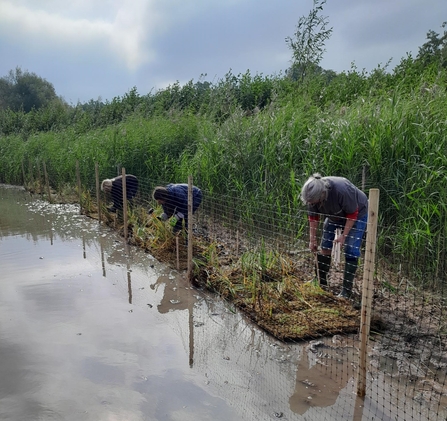While Bodenham Lake is already well known as a beautiful place to watch wildlife, this latest project has created and extended a range of habitats which will benefit the wildlife that already call the site home – and hopefully attract more.
The Network for Nature programme provided £108,000 of funding to continue the programme of improvements to the Nature Reserve which began when Herefordshire Wildlife Trust took on management of the site in 2016. This project started in 2022 and will be completed this spring.
Key successes include:
Creating an additional one hectare of reedbed and marginal aquatic plans on the lake shore. This type of habitat is a nationally scarce habitat which is important for many species. It provides a nursery for fish fry to shelter within which, in turn, supports populations of egret, grey heron and otter. It is also excellent habitat for a number of wetland bird species such as reed warbler, teal and water rail. Eight protective enclosures have been installed to protect the young reed plants from the geese who eat the young growth!
The greater the area of reedbed, the more beneficial for wildlife, and this newly planted site adds to other areas we have created within the Lugg Valley.
Restoring two hectares of floodplain meadow grassland, the riverside meadows beside the church and within the wildlife refuge area, through green hay, seed strewing and plant plug planting. The team used seed from nearby Nature Reserves which hosts a very particular and rare mix of floodplain grass and plant species found almost exclusively in the Lugg Valley.
Creation of five ‘hibernacula’ for toads to shelter over winter. Bodenham Lake is home to one of the largest breeding populations of the common toad. However, though the lake margins provide the perfect spot in which to spawn, to reach the lake from their winter homes within the woodland above the lake, the toads must cross a road, which often proves fatal. While teams of volunteers currently patrol the road on spring evenings to help the toads across, building hibernacula on the site will hopefully mean many toads will remain within the nature reserve over winter, avoiding this perilous journey.

